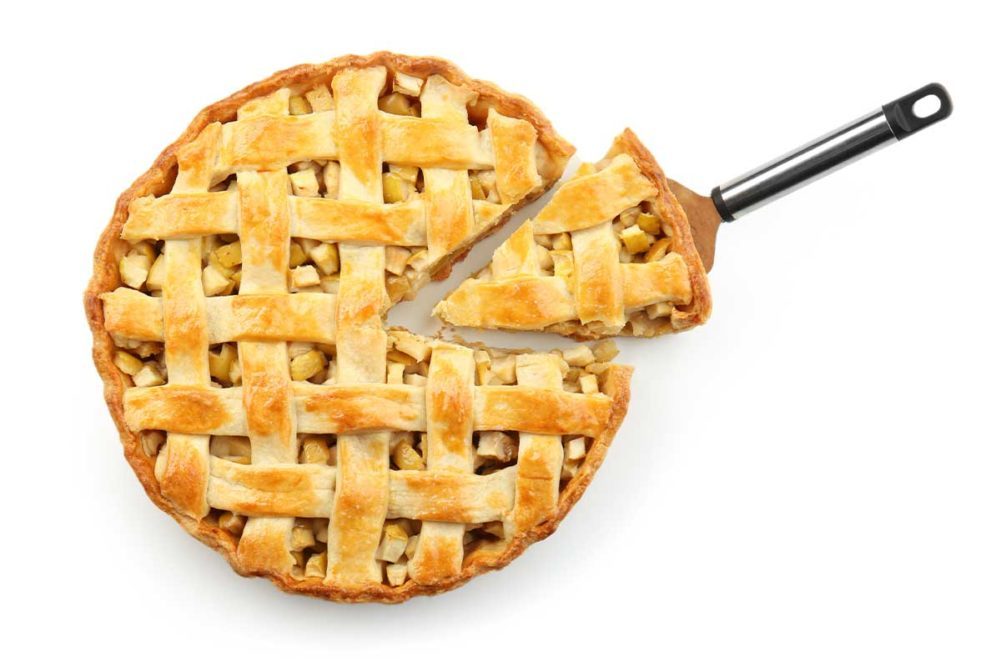Lattice toppings on fruit pies are often done manually although they can be automated in two ways: either with a dough sheet that is slit and stretched or with a rotary moulder.
“One we really don’t see in the US is using a rotary moulder that can do a lattice,” said Ken Hagedorn, vice president of the bakery sector for Handtmann. “The problem is, you can’t use an American pie dough in that lattice. In Europe, they use a regular pie dough on the bottom, but the top dough is more like a cookie dough formula. It’s a big drum roller, and you engrave whatever you want.”
Labor-intensive lattice crust pies can be automated using a Vemag extrusion divider equipped with an adjustable sheeting head that will sheet pie dough to the desired thickness and then cut into strips of appropriate width and length using on-belt wheel and blade cutters, said Jeff Zeak, national development manager, bakery, Reiser.
“Strips are then separated and laid on top of the pie in desired spacing intervals,” he added. “Strips do not have to be cross interwoven, and this will save time and improve production efficiency.”
Rick Hoskins, chief executive officer, Colborne Foodbotics, said his company has automated lattice toppers available, but one part of them remains elusive for bakers.
“What the industry is looking for is how to better automate a more hand-woven lattice look,” he said. “The only way to date to do this is through very capital-intense automation. This is absolutely an automatable process, however, the economics related to investment and payback are not quite there.
Trends involving full-size, smaller and handheld pies are pushing pie processing in several directions.
“Consumers in the post-pandemic era still maintain the smaller size of pie that has been popular for years as people focus on portion control,” said Nick Magistrelli, vice president of sales, Rademaker USA. “Some of the latest trends in the supermarkets are items such as mini fresh fruit tarts for the health-conscience or lower carb and vegan offerings.”
He added that gluten-free quiche made with organic ingredients is trending for health-minded consumers, while authentic pies tied to heritage or holidays tap into the indulgent side.
Mr. Zeak said he’s seeing fruit pies that combine traditional fruits like apple, cherry and peach mixed with exotic fruits like acai, blood oranges, dragon fruit, guava, lychee and passion fruit.
“Traditional favorite pies such as apple pie are being reinvigorated with the addition of flavors including buttermilk pancake, chai tea, French toast, malted milk, salted caramel and sangria as well as the addition of herbs like rosemary, sage or tarragon,” he added.
Robin Venn, president of Tippin’s Gourmet Pies, Kansas City, Kan., said the latest trends include natural ingredients instead of additives and fillers and more value-added options such as 6-inch pies that provide smaller portions, less waste and are more affordable.
Large-scale pie production creates many challenges for bakers, but best practices and the right equipment will smooth the way and produce the best pies from bottom to top.

